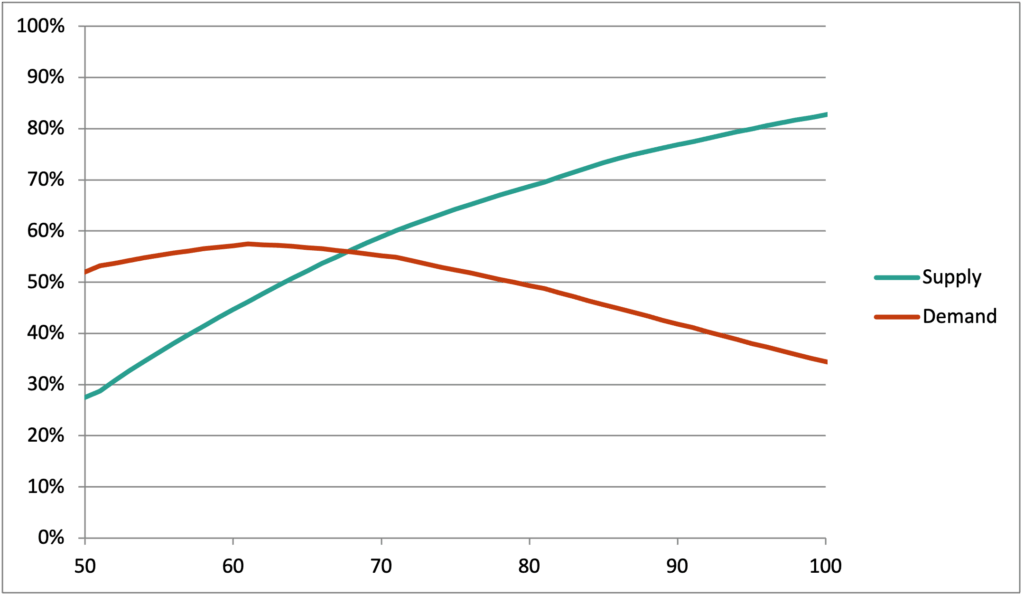A Story of Balance, Work, and Urban Life in Zambia
This article is based on original field research conducted by Global South Research agency in Lusaka.
- 320 taxi drivers and 418 taxi passengers were surveyed
- Method: street intercepts, computer assisted formal interviews
- Location: Lusaka urban area, including taxi hubs, shopping centers, and transport terminals
- Fieldwork conducted in May 2025
The research aimed to capture real-world perspectives on pricing, demand behavior, and work conditions across both sides of the market.
Ride-hailing dominates the market, covering 88% of all rides. Yango alone accounts for nearly 85%. For clarity, we will refer to taxi services as “ride-hailing” or simply “Yango” interchangeably throughout this article.
Zambia’s Ride-Hailing Economy: Not a Luxury, but a Lifeline
Nearly 80% of Lusaka agglomeration residents report using Yango. That’s an astonishing level of engagement — suggesting that Yango is no longer a special service, but a core part of urban life. From getting to work, to running daily errands, the Yango is the circulatory system of the city.
But how does this system sustain itself? The answer lies in balance — between driver income and passenger affordability.
Driving as a Profession: The Core of the System
- Two out of three drivers treat Yango as their main job, not a side gig.
- Most clock full time, showing deep commitment.
- Their average monthly income is around ZMW 5,500 — on par with the national average (5,883 ZMW, src: https://worldsalaries.com/average-salary-in-zambia/) and significantly higher than typical part-time or informal jobs.
In a labor market with many informal or part-time roles, full-time driving offers a stable and respectable source of income.
This income level is not incidental — it’s a result of market equilibrium. Raise prices too far, and passengers vanish. Lower them, and drivers leave. That’s the fragile balance that keeps the system working for both sides.
What Passengers Actually Do When Prices Change
According to survey data:
- A 10% price increase leads to ~67% of users claiming they would reduce usage.
- A 10% price decrease brings only ~31% reporting increased usage.
This suggests an asymmetrical response: passengers are quick to cut back when prices rise, but slower to increase usage when prices fall. Demand appears elastic on the downside — and that puts upward pressure on the system’s limits.
The Hidden Cycle: Peaks, Slumps, and Pricing Response
To understand how pricing works in real life, we asked respondents to imagine a typical 10-minute, 5-kilometer ride at noon — for instance, from Manda Hill shopping mall to the inter-city bus terminal.
Our simulation revealed a clear dynamic:
- Maximum demand aligns with peak-hour fares, around ZMW 60.
- During those hours, the market works well — passengers ride, drivers earn, and prices reflect real-time value.

But outside of peaks, especially around midday, the balance shifts:
- Fewer ride requests, but many drivers stay online, hoping for the next trip.
- The system adjusts by lowering fares to stimulate demand and prevent idle time.
6:00

9:00

7:00

10:00

8:00

11:00

This creates a hidden opportunity — and a hidden risk.
Two Takeaways:
- For drivers: If you’ve already worked hard in the morning, mid-morning might be your moment to pause. Among those who drive full-time, more than 80% report working over 40 hours per week. Long-term well-being often depends not on more hours, but on smarter ones.
- For passengers: You might be missing out on the cheapest rides of the day. Midday travel often comes with lower fares, shorter waits, and less traffic.
The market isn’t perfect yet — but it’s responsive. And the better we understand its rhythms, the more we can align with them.
More Than Economics: A Matter of National Confidence
«When a market works, it’s not charity or exploitation — it’s mutual respect. Between labor and service, between cities and citizens.»
Zambia’s ride-hailing market is a rare example of an organic system that works — providing employment, mobility, and everyday convenience at scale.
It’s not perfect. But it’s in motion — and finding balance every day.
